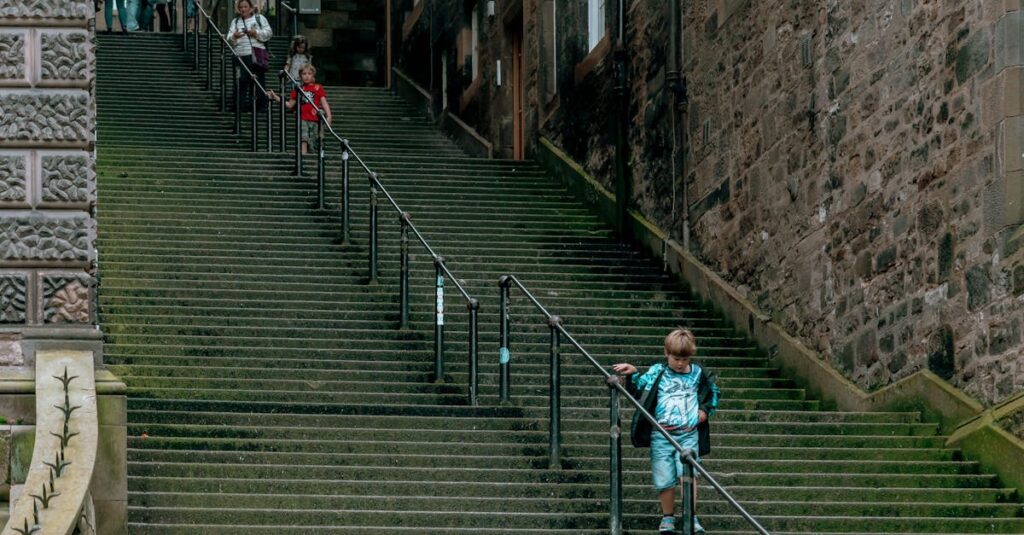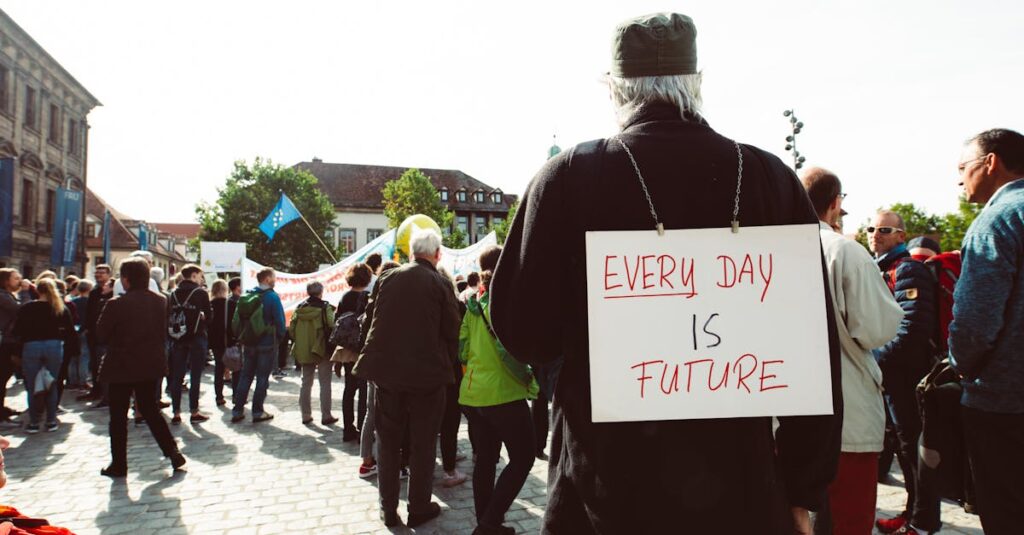History of urban green spaces have transformed cities from concrete jungles into vibrant oases where nature and civilization coexist. From ancient Persian gardens to modern metropolitan parks these green sanctuaries have played a crucial role in shaping human settlements for thousands of years.
The history of urban green spaces began in ancient civilizations where rulers created elaborate gardens as symbols of power and prosperity. These early experiments with urban nature evolved into the carefully planned public parks and gardens we know today. What started as private pleasure gardens for the elite gradually became essential public spaces that now serve as the lungs of our bustling cities.
Through centuries of urban development gardens, parks and other green spaces have become more than just pretty places. They’re vital infrastructure that improves air quality supports biodiversity and provides countless physical and mental health benefits to city dwellers. It’s a fascinating evolution that continues to shape how we design and experience our modern cities.
History of Urban Green Spaces
Urban green spaces originated in ancient civilizations as carefully planned landscapes that combined beauty with functionality. These early gardens served as demonstrations of power while providing essential gathering spaces for communities.
Early Persian and Egyptian Gardens
Persian gardens emerged in 4000 BCE as geometric masterpieces called “paradise gardens.” The Pasargadae Garden in Iran featured intersecting waterways that divided the space into four sections, establishing the chahar bagh design pattern. Egyptian nobles created private gardens with artificial lakes, fruit trees (dates, figs, pomegranates) ornamental plants (lotus, papyrus) around 2800 BCE. The Temple of Karnak incorporated sacred groves where priests cultivated medicinal plants. These gardens emphasized symmetry, water features religious symbolism through their careful arrangement of vegetation paths.
Greek and Roman Urban Green Spaces
Greeks established public gardens near gymnasiums temples in 600 BCE, creating spaces for philosophical discussions athletic training. The Academy of Athens incorporated extensive gardens where Plato taught his students. Romans expanded urban greenery through public parks, courtyard gardens private villas. Notable examples include Hadrian’s Villa with its extensive water gardens the Gardens of Lucullus on Rome’s Pincian Hill. Roman gardens featured elaborate topiaries, fountains statues integrated into architectural designs. The development of aqueducts enabled sophisticated irrigation systems that maintained these lush landscapes throughout the empire.
Rise of European Public Gardens
European public gardens emerged during the Middle Ages as spaces of cultivation blending functionality with aesthetic appeal. These gardens marked a significant shift from private royal gardens to more accessible green spaces across Europe.
Medieval Monastery Gardens
Monastery gardens served as self-sustaining ecosystems within medieval European religious communities. Monks created distinct garden sections including medicinal herb gardens (herbularium), vegetable gardens (hortus), and ornamental gardens (viridarium). The designs incorporated symbolic elements such as cruciform pathways representing Christian motifs. Notable examples include the St. Gall Monastery in Switzerland which established a comprehensive garden layout featuring 16 raised beds for medicinal plants arranged in geometric patterns. These gardens preserved ancient horticultural knowledge through detailed manuscripts documenting plant cultivation techniques.
Renaissance Pleasure Gardens
Italian Renaissance gardens transformed European landscape design through geometric patterns symmetrical layouts. Villa d’Este in Tivoli exemplifies Renaissance garden architecture with its elaborate water features terraced gardens statuary. French formal gardens emerged from this tradition featuring parterre designs axial perspectives long reflecting pools. The Château de Versailles gardens established in 1661 showcase mathematically precise layouts covering 800 hectares. Notable elements include topiaries grand fountains ornate pathways designed by André Le Nôtre. These gardens influenced European garden design for centuries establishing principles of formal landscape architecture.
Birth of Modern Public Parks
The modern public park emerged in the 19th century as cities expanded rapidly during the Industrial Revolution. Urban reformers recognized parks as essential solutions to combat overcrowding health issues in growing metropolitan areas.
Victorian Era Park Movement
The Victorian Era sparked a transformative period in urban park development from 1837 to 1901. Joseph Paxton pioneered public park design through Birkenhead Park in Liverpool, completed in 1847, creating the first publicly funded civic park. Cities across Britain embraced the park movement, establishing over 200 public parks by 1880. The movement emphasized ornamental gardens, decorative fountains, bandstands, lakes for boating. Frederick Law Olmsted visited Birkenhead Park in 1850, drawing inspiration for his later American designs. London’s Victoria Park served as a model featuring wide promenades, flower gardens recreational facilities that catered to working-class residents.
Central Park’s Revolutionary Design
Frederick Law Olmsted Calvert Vaux revolutionized urban park design with New York’s Central Park in 1858. The 843-acre park incorporated natural landscapes, featuring meadows, woodlands lakes that provided an escape from city life. Central Park introduced innovative elements including separate circulation systems for pedestrians, horseback riders vehicles. The park’s Sheep Meadow hosted grazing sheep until 1934, maintaining grassy areas while creating a pastoral atmosphere. Olmsted’s design principles influenced park development across North America, establishing parameters for integrating nature into urban environments through deliberate landscape architecture.
Urban Green Space Evolution in the 20th Century
The 20th century marked a transformative era for urban green spaces, characterized by innovative design movements and changing social priorities. Urban planners integrated parks and gardens into city infrastructure while addressing rapid urbanization challenges.
City Beautiful Movement
The City Beautiful Movement emerged in North America between 1893 and 1920, championing urban aesthetics and civic pride. Chicago’s 1893 World’s Columbian Exposition catalyzed this movement, featuring grand boulevards lined with trees and interconnected park systems. Daniel Burnham’s 1909 Plan of Chicago exemplified these principles, establishing 26 miles of public lakefront parks. Cities like Washington D.C. incorporated monumental civic spaces surrounded by formal gardens, while Denver created a mountain parks system spanning 14,000 acres. By 1910, the movement had influenced 75 American cities to develop comprehensive park systems focusing on geometric layouts, ornamental fountains and classical architecture.
Post-War Urban Planning
Post-war urban development prioritized functional green spaces within residential neighborhoods from 1945 to 1970. The Garden City model influenced suburban planning, incorporating green belts and neighborhood parks at quarter-mile intervals. New Towns in Britain created 32 planned communities with 40% dedicated green space. American suburbs adopted similar principles, with Levittown, New York allocating 7 acres of parkland per 1,000 residents. Urban renewal projects in existing cities established pocket parks, community gardens and linear greenways along former industrial corridors. Stockholm implemented its Park Program in 1956, preserving natural areas within 10 minutes walking distance of all residential areas.
Contemporary Urban Green Space Design
Modern urban green spaces integrate technological innovation with ecological principles to create sustainable environments that benefit city residents. These spaces adapt to contemporary challenges while fostering community engagement.
Sustainability and Climate Adaptation
Urban green spaces now incorporate climate-resilient features to combat environmental challenges. Rain gardens capture stormwater runoff while bioswales filter pollutants from surface water. Green roofs on buildings reduce energy consumption by 15-25% during peak summer months. Cities like Copenhagen utilize permeable surfaces in parks to manage flooding, with capacity to absorb 6 million gallons of water annually. Native plant species comprise 70% of new urban landscaping projects, reducing water consumption by 30-50%. Smart irrigation systems monitor soil moisture levels to optimize water usage, cutting consumption by up to 40% compared to traditional methods.
Community-Focused Planning
Contemporary green space design prioritizes inclusive community participation throughout development phases. Digital platforms enable residents to vote on design elements, resulting in 45% higher usage rates of completed spaces. Parks feature multipurpose areas that accommodate diverse activities: exercise stations, community gardens, cultural event spaces. Cities like Melbourne designate 30% of park space for community-led initiatives, including urban farming projects producing 2,000 pounds of fresh produce annually. Accessibility requirements ensure 90% of residents live within a 10-minute walk to green spaces. Interactive elements such as educational signage, nature play areas, and outdoor classrooms engage visitors of all ages.
Future of Urban Green Spaces
History of urban green spaces have undergone a remarkable journey from exclusive royal gardens to vital public resources. Their evolution reflects humanity’s changing relationship with nature and urban development. Today’s parks and gardens serve as testaments to centuries of innovation in landscape design while addressing modern challenges like climate change and community wellbeing.
These spaces continue to adapt and evolve meeting the needs of contemporary urban life through sustainable design practices and community engagement. As cities grow and face new environmental challenges urban green spaces remain essential components of resilient sustainable communities shaping the future of urban living for generations to come.



